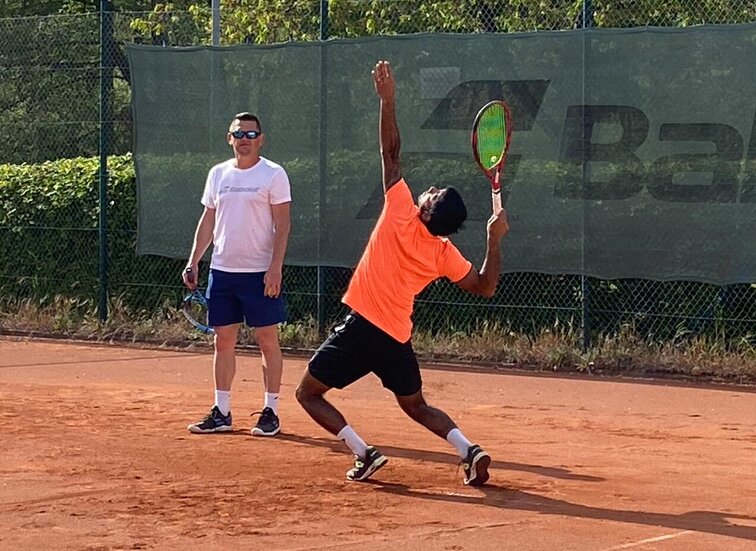"Time for change": How coaches and players can use the Corona break
No professional tennis in sight and therefore hardly a "real" goal that professional players and young players can train towards. Even Roger Federer is currently not very keen on working out on the training pitch - you can also use the Corona break in a positive way and improve yourself as a tennis player. A guest contribution by Sascha Nensel.
by Sascha Nensel
last edit:
May 24, 2020, 12:10 pm

There has never been such a break in professional tennis or international youth tennis. But as bad and uncomfortable as this time is: it can have a positive effect. Because the only realistic time for major technical changes is this tournament-free time, since the players can work with time and in peace without pressure (tournaments, defending points, etc.). In the other "mill" this is almost impossible, even in the season preparation the time for technical changes is often too short.
Tactical variants in the existing game structure can now be incorporated and consolidated without having to think about the next week of the tournament again. The young players often have smaller or larger restrictions, particularly when it comes to grip position / posture. Due to the many competitions, coaches often refrain from making a correction. The uncertainty for the player would be too great here. The last few weeks and the current phase should be used for this.
# IMG2 #
Why not serve and volley?
Even in professional tennis, technically ready players can work very well on new moves to create more tactical opportunities in competition. So the baseline player can discover the serve-and-volley game, the typical backhand ambidextrous suddenly vary with the one-handed slice. Or the otherwise passive return player can suddenly act more aggressively and energetically and optionally return in the field.
I believe that on the tour in particular the players know each other almost perfectly, and the moves are often predictable for the opponent. One or the other could now use this time to come back on the tour with a moment of surprise. And maybe find the decisive nuances to jump forward when it starts again.
AboutSascha Nensel , 50, has been a coach on the ATP and WTA tours for 18 years. He trained among others Nicolas Kiefer, whom he led to the semi-finals of the Australian Open 2006, as well as Julia Görges, Andrea Petkovic, Petra Martic, Dusan Lajovic, Tobias Kamke and Sumit Nagal . Nensel is a partner and initiator of the Nensel Academy in Peine ( www.nensel-academy.com ), which focuses on long-term sports education for young people as well as training and mentoring professional players.
# AD #

